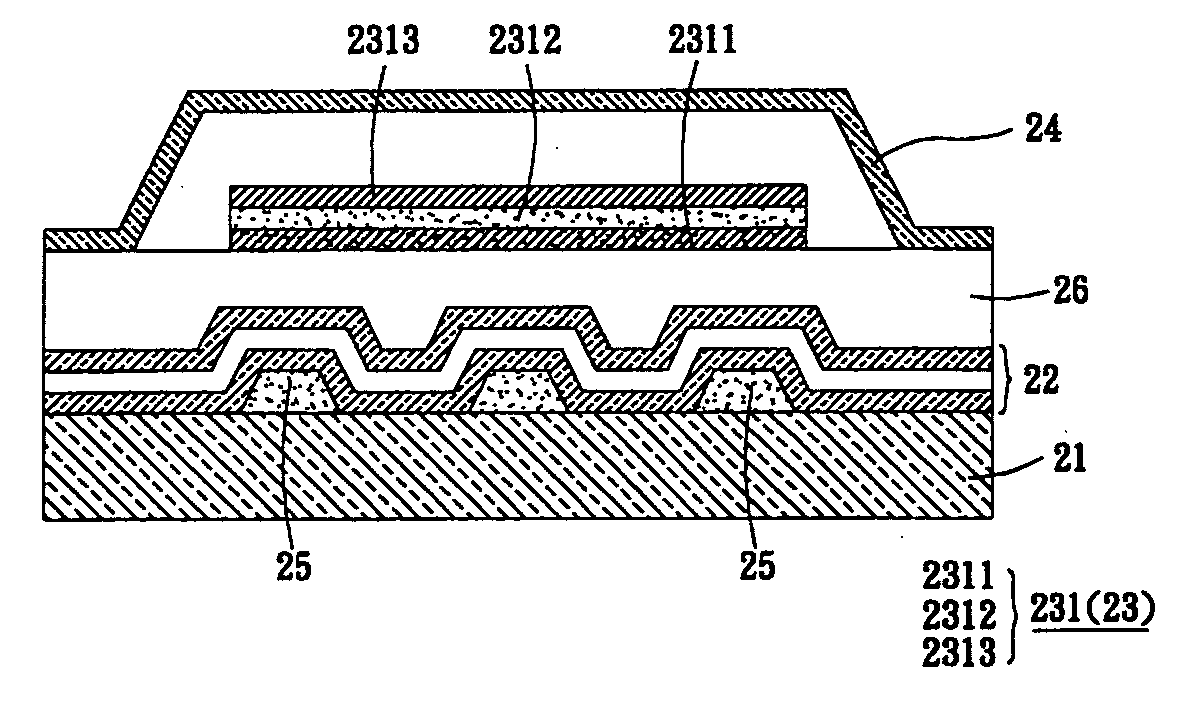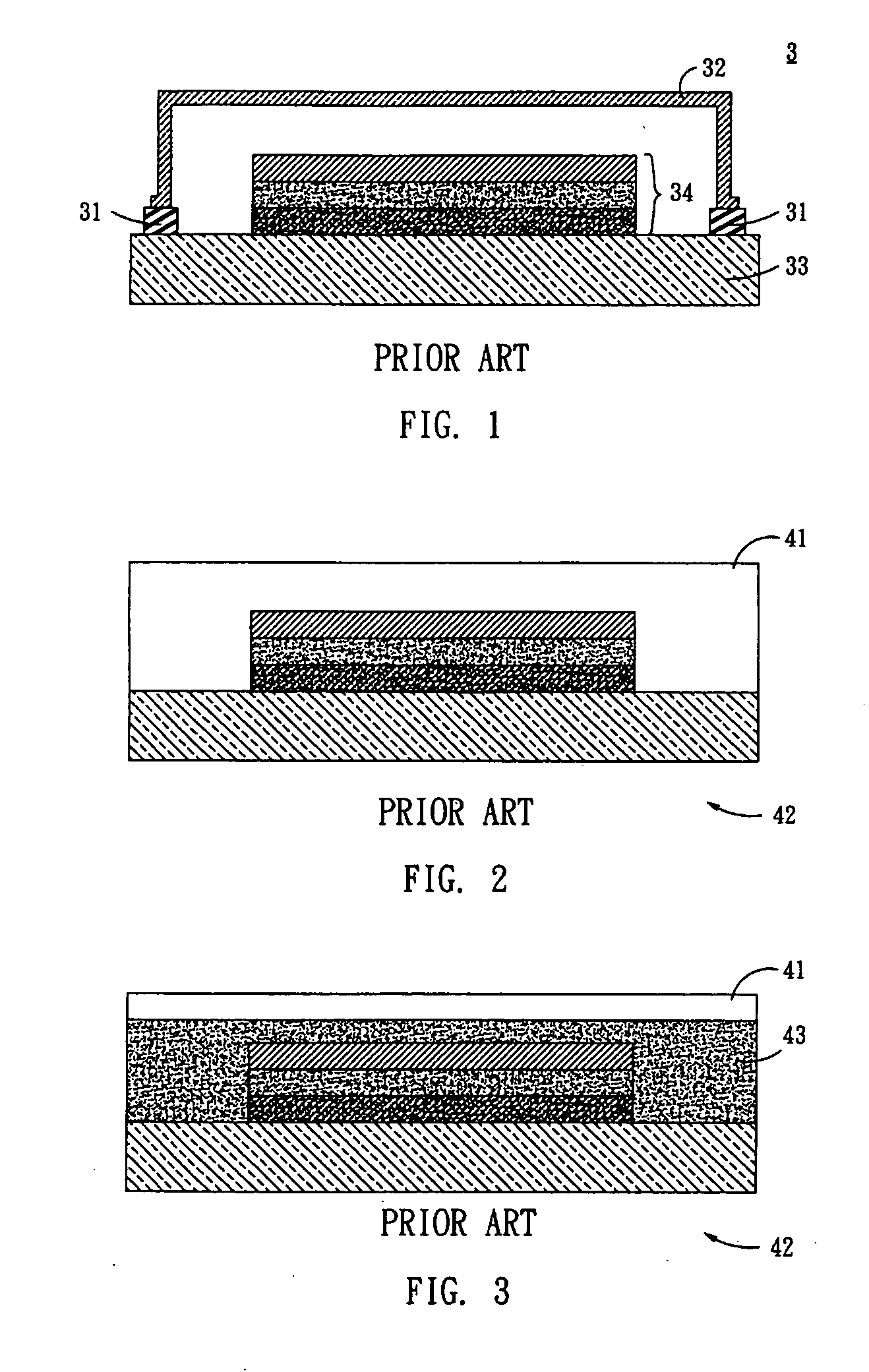Panel of organic electroluminescent display
- Summary
- Abstract
- Description
- Claims
- Application Information
AI Technical Summary
Benefits of technology
Problems solved by technology
Method used
Image
Examples
first embodiment
[0021] First Embodiment
[0022] With reference to FIG. 4, an organic electroluminescent display panel 1 according to the first embodiment of the invention comprises a substrate 11, at least one organic light-emitting area 12, at least one protecting layer 13 and at least one isolation layer 14. In the embodiment, the organic light-emitting area 12 is disposed over the substrate 11 and comprises a plurality of pixels 121. The protecting layer 13 is disposed over the substrate 11 and the organic light-emitting area 12. The isolation layer 14 is disposed over the protecting layer 13.
[0023] In the present embodiment, the substrate 11 can be a flexible or a rigid substrate. The substrate 11 can also be a plastic or glass substrate. In particular, the flexible substrate or plastic substrate can be made of polycarbonate (PC), polyester (PET), cyclic olefin copolymer (COC), or metallocene-based cyclic olefin copolymer (mCOC). Of course, the substrate 11 can also be a silicon substrate.
[0024...
second embodiment
[0045] Second Embodiment
[0046] With reference to FIG. 12, an organic electroluminescent display panel 2 according to the second embodiment of the invention comprises a substrate 21, a plurality of isolation layers 22 and at least one organic light-emitting area 23. In the embodiment, the isolation layers 22 are disposed over the substrate 21 and comprise an inorganic material. The organic light-emitting area 23 is disposed over the isolation layers 22 and comprises at least one pixel 231.
[0047] The features and functions of the substrate 21, isolation layers 22, organic light-emitting area 23, pixels 231, first electrode 2311, organic functional layer 2312 and second electrode 2313 are the same to those described in the first embodiment, so the detailed descriptions are omitted here for concise purpose.
[0048] With reference to FIG. 12 again, the organic electroluminescent display panel 2 further comprises an encapsulating layer 24, which is disposed over the isolation layers 22. H...
PUM
 Login to View More
Login to View More Abstract
Description
Claims
Application Information
 Login to View More
Login to View More - R&D
- Intellectual Property
- Life Sciences
- Materials
- Tech Scout
- Unparalleled Data Quality
- Higher Quality Content
- 60% Fewer Hallucinations
Browse by: Latest US Patents, China's latest patents, Technical Efficacy Thesaurus, Application Domain, Technology Topic, Popular Technical Reports.
© 2025 PatSnap. All rights reserved.Legal|Privacy policy|Modern Slavery Act Transparency Statement|Sitemap|About US| Contact US: help@patsnap.com



